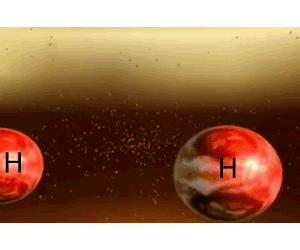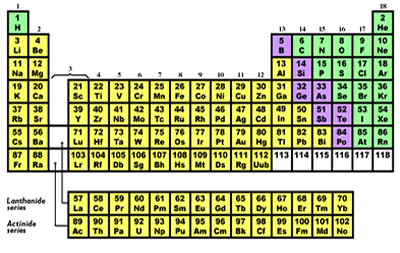Nucleogenesis
The origin of chemical elements in the universe.
Elements found on Earth and throughout the universe have their birth in stars and in catastrophic phenomenon such as supernovae. A supernova is a massive explosion resulting from the death of a star many times bigger than our own sun.
Hydrogen clouds swirl in space and eventually collapse in on each other under the influence of gravity. Pressure builds and temperature rises to fuel atomic fusion reactions. Hydrogen atoms collide together and fuse to form helium. Hydrogen is the primary fuel of stars and fusion reactions create the heat that radiates from stars such as our own sun.
The heat pushing the gasses outward and the gravitational force squeezing the gasses inward are at equilibrium. As the hydrogen runs out the heat produced by the star decreases and gravity squeezes the gasses even tighter towards the centre of the star. The squeezing generates more heat that fuses atomic nuclei together to form much heavier atoms than helium. This process continues until it reaches a dead end at iron. Iron is the heaviest element a star can produce signalling the end of the star's life. The fate of the star now depends on its size. Small stars fade away as the gravitational pull of the star is not sufficient to crush it. Big stars, however, suffer a more catastrophic fate. The star collapses and then rebounds spewing energy and matter into space. This phenomenon is known as a supernova. Supernovae are the most violent, single events known in our universe. The immense energy given off fuses lighter elements together to form elements heavier than iron, such as copper, gold and uranium.
Fusion of atomic nuclei only takes place at very high temperatures starting at a few million degrees Celsius. Such temperatures can be found in stars such as the sun. Not all nuclei fuse at the same temperature. Heavier nuclei require greater temperatures and greater densities to undergo fusion. The formation of iron signalling the beginning of the end of the star. All fusion reactions that take place within a star produce an extraordinary amount of energy. It is this energy that keeps the star glowing brightly and fuels further fusion reactions.
Such high temperatures are needed to drive positive nuclei together in order to fuse. Temperatures need to be high in order to overcome the electrostatic repulsion between positive charges of protons.

Look at the video on the right.
Give a detailed explanation of how elements oxygen and silver are formed.

All the elements in the universe are organised in a table called the "Periodic Table" as shown on the right.
Which elements were created during the Big Bang?
The creation of what element signals the death of a star?
Which element was created during a supernova?
Which comment is true?